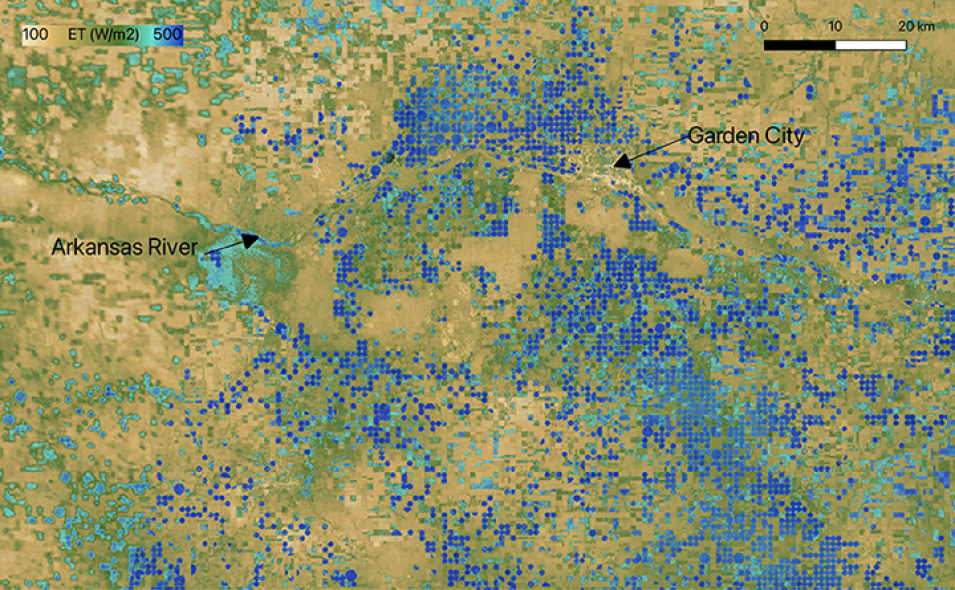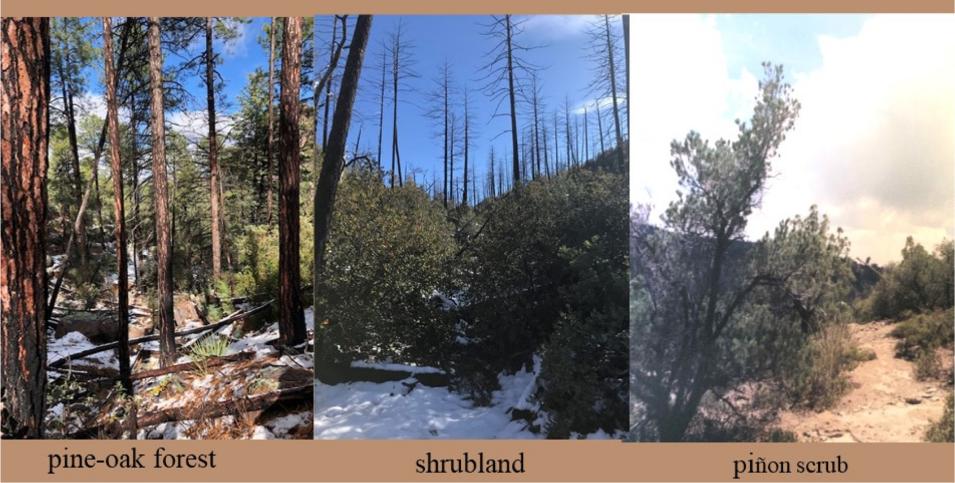Dr. Helen Poulos, Adjunct Assistant Professor of Environmental Studies, Wesleyan University College of the Environment
Research Interests: Plant ecophysiology, community ecology, fire ecology, and forest hydrology.
Research Highlights: When Dr. Helen Poulos was in graduate school there were two classes that, as she puts it, “really kind of blew [her] mind.” The first was a remote sensing class, where she learned to manipulate satellite imagery and understand how different surfaces reflect light across the electromagnetic spectrum. The second, which she took during the same semester, was a methods in tree physiology class where she and her classmates took spectral reflectance measurements on individual leaves.
“Taking those two classes at the same time resulted in this aha moment,” Poulos said. “I thought, ‘Wow, I can actually take measurements on a leaf and then scale those measurements across landscapes or regions using satellite imagery. How cool is that?’”
This insight has not only stayed with her, it’s become a recurring theme in her research and in the lessons she imparts to her students.
“When we’re looking at satellite imagery I always ask my students, ‘What do you think is happening on the ground?’" Poulos said. “You can only tell so much about what’s happening on the ground from space, but if you have a good relationship between your observations from space and those from the ground, then you can scale those measurements across landscapes.”
Poulos teaches those students in Wesleyan University’s College of the Environment, where she serves as Adjunct Assistant Professor of Environmental Studies and conducts research on the way the forests of the Southwestern United States are changing in response to climate change and more severe, frequent, and widespread wildfires.
“Historically, fires [in the region] were frequent and occurred at regular 5- to 15-year intervals to clean out forest understories, keep fuel loads low, and prevent really big, hot, high-severity fires from coming through,” Poulos said. “These frequent fires were predominantly how our forests adapted to disturbances over long periods of time.”
Although these fires were common due to lightning and Native American burning practices, they began to occur less frequently in the late 1800s following the Euro-American colonization of the West, resulting in a build-up of fuels and changes to the region’s fire regime.
“Now, with climate change, what we’re seeing is really heavy fuel loads in forests that haven’t burned for more than a century. Now as they burn, we are seeing big changes in our forests,” Poulos said. “Forests are really struggling to survive and regenerate in this hotter, drier, fiery environment, so I’m using remotely sensed data to understand the relationships between fire severity and the patterns of vegetation in response to these more frequent, very hot, and very expansive fires.”
Of course, not every wildfire in the region is a high-severity conflagration burning hundreds of square miles. Some fires continue to burn as they once did, even with the build-up of fuels and the hotter, drier climate.
“Many fires are still burning as they did in the past, but in those places that are burning differently we’re seeing conversions from forest to non-forest,” Poulos said. “I am trying to figure out where fires are burning as they did in the past and where we’re seeing these really big transitions happening.”
Describing how fire regimes—the patterns of how fire burns on the landscape over time—are changing in the Anthropocene and how forests respond to them, comprises one part of her research. The other involves the use of remotely sensed data to inform forest management and restoration.
“The second part of my research is the applied part, which focuses on understanding what tools we can use to try to reduce fire and climate change risk to forests,” she said. “How can we use remotely sensed data and imagery to detect these changes and then use management [techniques] to create more climate- and fire-resilient forests?”
The data and imagery that Poulos uses in her work come from a variety of sources, including NASA’s Land Processes Distributed Active Archive Center (LP DAAC). Located at the USGS Earth Resources Observation and Science (EROS) Center near Sioux Falls, South Dakota, the LP DAAC ingests, processes, archives, and distributes data products related to land processes in NASA’s Earth Observing System Data and Information System (EOSDIS) collection. These data are crucial to the investigation, characterization, and monitoring of biological, geological, hydrological, ecological, and related conditions.
“In terms of imagery, Landsat is very important for mapping fire severity, and I use observations of post-fire forest hydrology and plant water cycling from the Ecosystem Spaceborne Thermal Radiometer Experiment on the International Space Station (ECOSTRESS) instrument,” Poulos said. “I also use Daymet Daily Surface Weather data from [NASA's] Oak Ridge National Laboratory Distributed Active Archive Center (ORNL DAAC), data from the European Space Agency’s Sentinel-2A and -2B satellites, the Advanced Spaceborne Thermal Emission and Reflection Radiometer Global Digital Elevation Model (ASTER-GDEM) product, and the Moderate Resolution Imaging Spectroradiometer (MODIS) gross primary productivity, fraction of photosynthetically active radiation, land surface temperature, and leaf area index products.”

